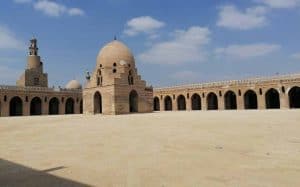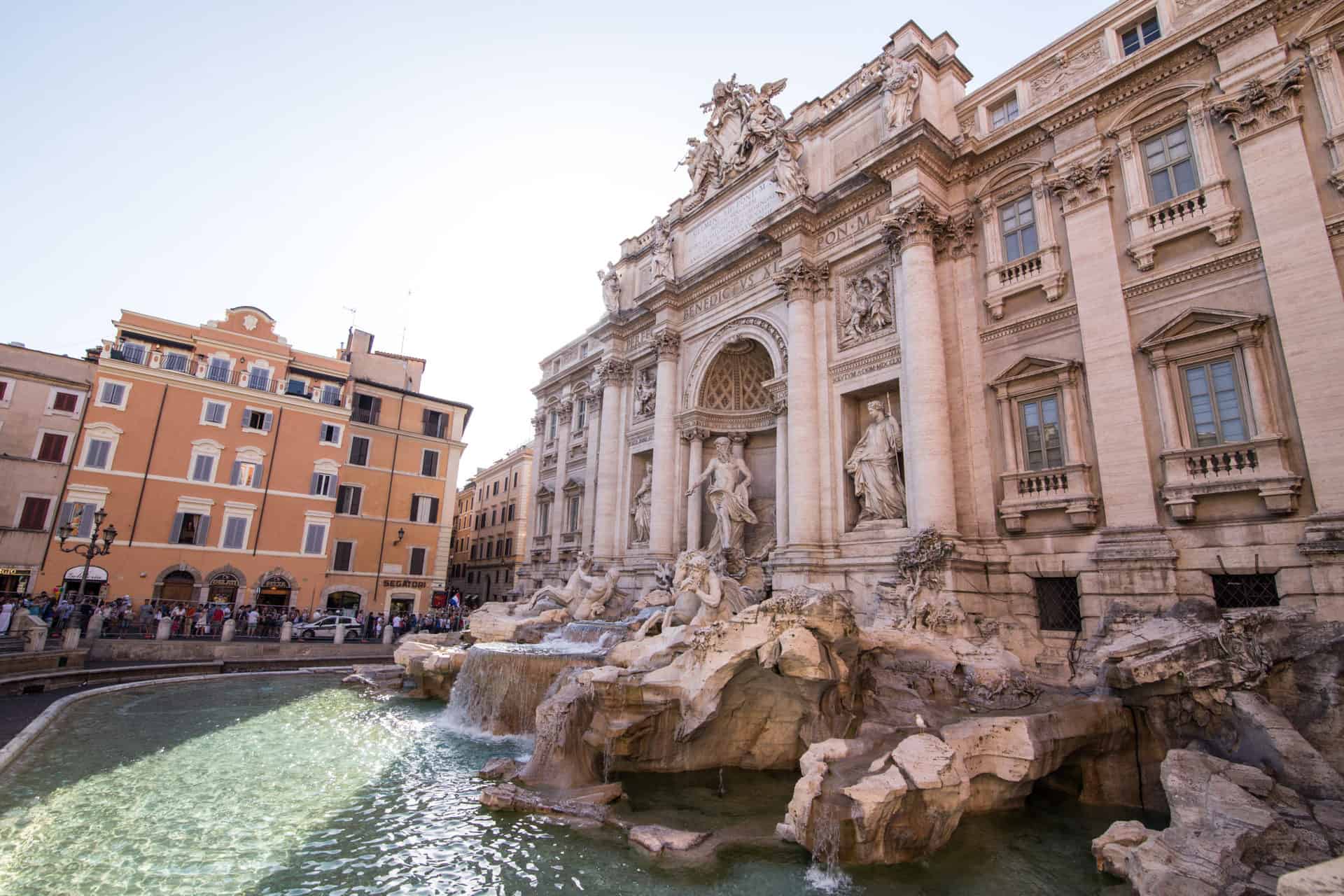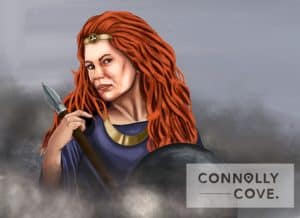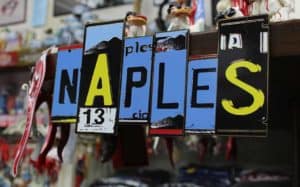Lughnasadh Celebrations in Ireland: Traditions and Modern Festivities

Updated On: April 22, 2024 by Maha Yassin
Lughnasadh celebration celebrates the first harvest within the Celtic tradition, a festival deeply rooted in Ireland’s agricultural past. Held on 1 August, it signifies the beginning of the harvest season, connecting us to our ancestors through shared customs and rituals. The festival honours Lugh, the ancient god of light, and his foster mother, Tailtiu, who is said to have died of exhaustion after clearing the plains of Ireland for agriculture. This time of year is characterised by fairs, feasts, and community gatherings, continuing the long-standing appreciation for the land’s bounty.
The observance of Lughnasadh stretches back to prehistoric times and remains an integral part of our cultural heritage, showcasing a tapestry of folklore and traditions. Although originally a Pagan festival, the celebrations have evolved, merging with Christian traditions over the centuries. Today, historical and modern practices are entwined, with many of us partaking in hill climbing, visiting holy wells, or attending festivals featuring athletic games, dancing, and market trading. The Lughnasadh festivals, varying by region, underscore the rich cultural fabric that weaves through our nation, paying homage to Ireland’s spirit and the rhythms of nature.
Historical Origins of Lughnasadh
Lughnasadh, deeply rooted in Celtic tradition and Irish mythology, emerged as a pivotal moment in the year’s wheel, blending myth with social and agricultural practices. It was a time when communities would come together to mark the beginning of the harvest season and honour the deities who blessed them.
Lugh and the Tailtiu Myth
Lugh, a prominent deity in Irish Mythology, is often at the heart of the Lughnasadh festival. As a warrior and king of the mythical Tuatha Dé Danann, Lugh was said to have established the festival in memory of his foster mother, Tailtiu. According to legend, she was a goddess of the land who exhausted herself to clear the plains of Ireland for agriculture. The Tailteann Games, reminiscent of the Greek Olympics, were held in her honour; these games were a show of strength and skill, celebrating the triumphs of humankind over the natural world.
Ancient Lughnasadh Customs
The customs of Lughnasadh were integral to the festival, serving as a means for the Celts to reinforce social bonds and prepare for the coming harvest. It involved not just the Tailteann Games but rituals to appease deities such as Crom Dubh, who was associated with dark aspects and the fertility of the land. These celebrations were held at several sites, including the prominent Óenach Tailten assembly in what is now County Meath. During this time, people engaged in matchmaking, legal agreements, feasting, and trading, with the primary purpose being to secure the community’s prosperity for the coming season. Lughnasadh’s origins are not just a testament to cultural beliefs but also showcase the harmonic interplay between early societies and the rhythmic cycles of nature.
Lughnasadh as a Gaelic Festival
We recognise Lughnasadh as an integral part of the Gaelic seasonal festivals, marking a crucial transition from summer into autumn and celebrating the onset of the harvest period.
Seasonal Importance and Timing
Lughnasadh, traditionally celebrated on 1 August, signals the beginning of the harvest season in the Gaelic calendar. It’s a time when the early yields of crops are gathered, heralding the transition as summer warmth gives way to the cooler days of autumn. This festival is aligned with other key Celtic events such as Samhain, Bealtaine, and the summer solstice, each significant within its time of the year. Lughnasadh sits between the summer solstice and the autumn equinox, encapsulating the essence of summer’s peak and autumn’s approach.
Socio-religious Aspects
Centring around the figure of Lugh, a god of the Tuatha Dé Danann, Lughnasadh is as much a socio-religious festival as it is a seasonal one. It weaves together community, spirituality, and the rhythms of nature. Ancient customs during Lughnasadh included athletic contests, trading, and matchmaking, underscoring the festival’s role as a time for communal gathering and social cohesion. Today, these traditions continue in modern forms, like the Auld Lammas Fair in County Antrim, where the melding of past and present can be observed amidst markets and festivities.
Folk Customs and Traditions

Lughnasadh is a time-honoured festival rich with deep-rooted customs and traditions celebrating the harvest in Ireland. These festivities intertwine with rituals and social practices embodying the community’s spirit and gratitude for the Earth’s bounty.
Harvest Rituals and Offerings
During Lughnasadh, it is customary for us to engage in harvest rituals. Central to these rituals is the offering of first fruits, where we present the earliest yields of crops as a sign of thanks. We often make these offerings to figures from Celtic mythology, such as Lugh, the god of craftsmanship, who was traditionally honoured at this time. Another potent symbol associated with the festival is Crom Dubh, a deity or figure from old Irish folklore to whom the first harvested grain is dedicated, known as Crom Dubh Sunday.
Matchmaking and Trial Marriages
Lughnasadh also presents a time for fostering new relationships and formalising existing bonds through matchmaking and trial marriages. A tradition fondly known as handfasting involves couples entering a marriage contract for a year and a day, a practice akin to trial marriages. Following this period, the couple can decide to part without stigma or continue their union permanently. Garland Sunday, another name for the festival, often features merriments where young singles wear garlands and seek prospective partners, hoping to find a match by the festival’s end.
Agricultural Significance

Lughnasadh, marked on 1 August, is a crucial time for agriculture in Ireland, symbolising the start of the harvest season. It’s a period when the hard work of planting and tending to crops bears fruit.
First Fruits and Harvest Work
Harvesting the first fruits is a principal component of Lughnasadh. It’s the time when grains like corn are ripe for gathering. The significance of the first harvest in the Irish agricultural calendar is rooted deeply in our culture. Bread made from the first grain harvest symbolises the essence of this season. The work doesn’t stop at reaping; it includes threshing and winnowing grains, indicating the start of a busy harvest season.
Livestock Management
Livestock management is equally important at this juncture of the year. When we decide on the animals to sacrifice or sell, we will sustain the community through the colder months. By the time of Lughnasadh, our decisions around livestock were critical as they affected not only the immediate availability of food but also the farms’ long-term supplies and economic standings.
Ceremonial Ferias and Games

In honour of Lughnasadh, Ireland has a rich tradition of holding ceremonial ferias and games that blend athletic prowess with social festivities. It’s a time for local communities to engage in competitive sports alongside a bustling atmosphere of trade and socialisation.
Tailteann Games and Athletics
Tailteann Games, reminiscent of the Ancient Olympic Games, were integral to Lughnasadh celebrations. Athletes would display their physical skills in a variety of challenges. These games included a range of athletic contests such as foot races, wrestling, archery, and the highly skilled chariot racing. The games not only honoured the dead but were also an occasion for displaying skill and strength among competitors.
Horse Racing and Trading
The horse racing events were equally exciting, which drew crowds from all over. The thrill of the race amplified the festive mood, creating a vibrant spectacle. Meanwhile, trading thrived at these gatherings. Markets would spring up where artisans and traders brought their wares, making it an opportune moment for locals to procure goods and livestock. Fairs like the historic Puck Fair also played a crucial role, with their origins entwined in tradition, offering a space for celebration and commerce.
Modern Celebrations
Lughnasa has undergone a vibrant revival in Ireland, serving as a showcase for Irish culture through music, dance, and storytelling.
Revival of Lughnasadh in Contemporary Times
We’ve witnessed a renaissance of Lughnasadh festivities, where the ancient traditions are honoured in a way that resonates with contemporary audiences. The heart of this revival thrums with the pulse of community gatherings, where people engage in the joy of collective celebration. These events often feature interactive experiences that connect participants with their Celtic heritage and the history of the Irish people.
- Community Events: Emphasis on inclusivity and shared experiences
- Heritage Workshops: Educational sessions on history and folklore
- Artistic Displays: Interpretations of ancient Lughnasadh customs
Cultural Events and Music
Cultural expressions during Lughnasadh now include a broad spectrum of the arts. Music, a cornerstone of Irish traditions, takes centre stage. Concerts and performances by local and national artists provide a lively soundtrack to the festivities. Dance and storytelling are also integral, with performances that embody the narratives of Lughnasa’s past.
Performances to Experience:
- Traditional Irish Music: Featuring both emerging and established musicians
- Dance: Showcasing Irish dance styles from jigs to expressive contemporary pieces
- Storytelling: Narratives that capture the essence of Lughnasa and Irish folklore
By fostering the continuity of these cultural practices, we contribute to preserving and evolving an integral part of our heritage. Through the lens of Lughnasadh, we revel in the merriment that these modern celebrations bring—a testament to the enduring spirit of our ancestors.
Regional Variations

Lughnasadh, a time-honoured festival in Ireland, varies intriguingly from region to region, encompassing unique local traditions and extending its reach across other Celtic nations.
Lughnasadh in Other Celtic Regions
In Scotland, the festival is known as Lùnastal and has parallels with the Irish celebration. The Scottish people observe it with their distinct customs, which often include highland games and storytelling. The Isle of Man also honours this period with their version of Lughnasadh, welcoming Manx people to unite in a cultural display that intertwines with the island’s myths and legends.
Unique Local Practices
In Ireland, certain areas are particularly renowned for their Lughnasadh observances. For example, in County Meath, the Tailteann Games, an ancient athletic event, were historically associated with the Lughnasadh festivities. Today, elements of this are reflected in modern gatherings and cultural commemorations. Another noteworthy local celebration occurs in Killorglin, known as the Puck Fair, where festivities involve crowning a wild goat as king, a symbol steeped in local lore and tradition.
Spiritual and Religious Context
Lughnasadh, rich in Irish traditions, has deep spiritual and religious significance, blending pagan customs with Christian practices.
Pagan and Christian Observances
Pagan: Lughnasadh is originally a pagan festival honouring Lugh, the Sun God, which is linked to arts, crafts, and the harvest. This celebration marked a time of thanksgiving for the bounty of nature. It featured various rites, including the lighting of bonfires, symbolising the power of the sun and its role in the life cycle of agriculture.
Christian: With the advent of Christianity in Ireland, many pagan customs were assimilated into the Christian calendar. The Church utilised Lughnasadh’s themes of harvest and community, evolving it into the feast of Lammas, meaning ‘loaf mass’, dedicated to blessing the first bread from the new crop.
Holy Wells and Pilgrimages
Holy Wells: Ireland’s landscape is dotted with numerous Holy Wells, considered sacred in pagan and Christian traditions. Visiting these wells during Lughnasadh is a practice that has survived for centuries, reflecting a reverence for the sacredness of water and its association with healing and life.
Pilgrimage: A vital aspect of Lughnasadh is the Catholic pilgrimage to Croagh Patrick on the last Sunday of July, known as Reek Sunday. Thousands climb this mountain, honouring Saint Patrick and continuing an ancient tradition that likely began with pagan customs honouring the deity Crom Dubh. This convergence of pagan and Christian beliefs illustrates the syncretic nature of Irish spiritual and religious observance.
Pagan Renewal and Neo-Paganism

In Ireland, the revival of ancient traditions has ushered in a new era of Pagan and Celtic-neo-pagan practices. This resurgence places a particular emphasis on honouring the old ways through modern expressions of spirituality.
Wicca and Celtic Neopaganism
As part of the broader Neopagan movement, Wicca plays a significant role in the Pagan revival, often weaving in elements of Celtic Polytheism. Adherents who align with Celtic Neopaganism strive to reconstruct the pre-Christian beliefs of the Celtic people in a contemporary context, placing value on ecological sustainability and personal spirituality. These neo-pagans typically observe the Celtic festivals, which form the Wheel of the Year, and Lughnasadh is one of these cardinal celebrations.
Rituals and Celebrations
Lughnasadh, a principal feast in the Pagan calendar, is commemorated with various rituals that underscore a reverence for Celtic tradition. Both Pagan and Wiccan communities have embraced Celtic Festivals, and today’s celebrations include activities such as the baking of bread, the holding of feasts, and the performance of traditional music and dance. Rituals might involve modern interpretations of ancient ceremonies, keeping the spirit of the past alive. These celebrations serve not only to honour the Celtic heritage but also to reinforce the bonds among members of these spiritual communities.
Culinary Aspects and Feasting

In Lughnasadh celebrations, the culinary element holds a place of honour. It showcases a rich array of traditional Irish fare and the community spirit deeply ingrained in this ancient festival.
Traditional Foods and Recipes
Among the quintessential dishes prepared during Lughnasadh, bread takes centre stage, symbolising the first harvest’s yield. Barmbrack, a type of sweet bread with dried fruit, is one such example. Hearty stews and dishes incorporating the season’s fresh produce, including potatoes and root vegetables, also feature prominently.
Traditional recipes often include:
- Breads: Soda bread, barmbrack
- Stews: Irish stew with lamb, root vegetables
- Desserts: Apple cakes, seasonal berry crumbles
These recipes provide sustenance and are laden with meaning and tradition, representing the fruits of the first harvest in the Celtic calendar.
Communal Feasting
Communal feasting underscores the essence of Lughnasadh, bringing people together to celebrate the harvest’s abundance. Everyone contributes dishes to a shared table, fostering a sense of unity and gratitude. Locals partake in communal meals during these feasts, often outdoors amid nature’s bounty.
Tables might be laden with:
- Heaps of freshly baked bread
- Bowls brimming with seasonal vegetables
- Platters of locally-sourced meats
These gatherings are not just about enjoying the harvest but also about reinforcing social bonds within the community. Through our collective efforts in the kitchen and at the table, we intertwine our cultural heritage with the simple pleasure of sharing a meal.
Frequently Asked Questions
In this section, we address some of the most commonly asked questions about the Lughnasadh festival as it’s celebrated in Ireland.
How is Lughnasadh celebrated in Irish culture?
Lughnasadh is a Gaelic festival that traditionally takes place on 1 August to mark the beginning of the harvest period. In Irish culture, celebrations often include gatherings at fairs and markets and the performance of traditional rituals to honour the god Lugh.
What is the historical significance of Lughnasadh celebrations in Ireland?
Historically, Lughnasadh is one of the four main festivals of the Gaelic calendar, deeply rooted in Celtic paganism. It celebrates the beginning of the harvest and is named after the god Lugh, symbolising light and harvest in Irish mythology.
What are the traditional customs associated with Lughnasadh?
Traditional customs include the “Bilberry Sunday”, where people gather wild berries and climb mountains, particularly Croagh Patrick on the last Sunday in July, known as “Reek Sunday”. There are also handfasting ceremonies, reflecting a time when trial marriages would commence and last a year and a day.
Which symbols are commonly associated with Lughnasadh festivities?
Key symbols associated with Lughnasadh include corn dolls or ‘Cornickes’ and harvest knots made from straw or rushes and worn or exchanged as tokens of goodwill. The harvest itself, featuring wheatsheaves and fruits of the land, plays a prominent role in the symbolism of Lughnasadh.
Could you share some traditional recipes typically prepared for Lughnasadh?
Traditional Lughnasadh recipes are centred around the new harvest and include dishes like Colcannon and Barmbrack, and sweet bread. Dishes make use of fresh grains, seasonal fruits, and vegetables that have just been harvested.
How do Lughnasadh celebrations in contemporary Ireland compare to ancient practices?
Contemporary Lughnasadh celebrations in Ireland have evolved, blending Christian and pagan traditions. While the essence of the harvest festival remains, many of the ancient practices are now commemorated as part of cultural festivals and historical re-enactments rather than widespread religious observances.






